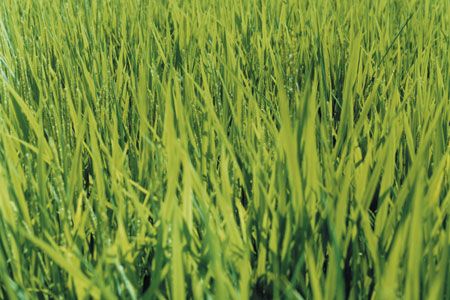Choosing the right grass for your lawn is necessary for a lush, healthy yard that can survive your local climate and soil conditions. Many grass varieties are available, but for the best-looking lawn, you should choose one that’s well-adapted to your specific region. This guide will explain the different grass types best suited for the six climate zones across the United States and which you should pick so your lawn stays vibrant year-round.
How To Choose the Right Grass for Your Area
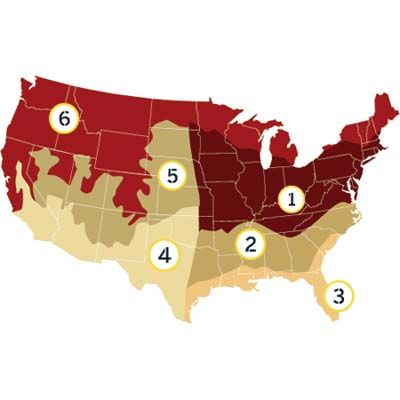
When choosing grass for your lawn, account for factors such as your local climate, soil type, and the amount of sunlight and shade in your yard. Newer grass variants and hybrids have better resistance to drought and disease and require less maintenance. They’re a great choice for homeowners looking to create a beautiful, low-maintenance lawn.
Note: Within each zone, certain species do better in some places than others. Warm-season grasses grow better in places with hot, dry weather and during warmer months. Cool-season grass thrives in places with hot summers and cold winters. Your local cooperative extension office can provide recommendations to help you choose a grass that will grow well in your yard.
Zone 1: Tall Fescue (Festuca arundinacea)
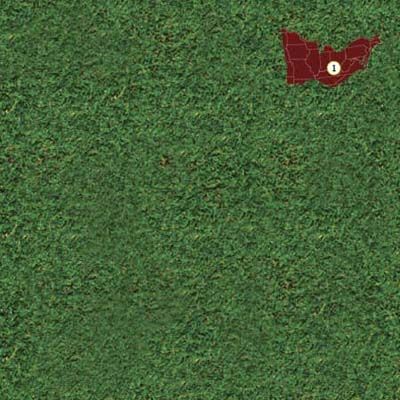
Tall fescue is a cool-season perennial grass that originated in Europe and has become a popular choice for many American lawns. This uniformly bladed, dark green grass type is known for its deep root system, which provides high resistance to drought and foot traffic, and its natural resistance to pests.
Traits: Tall fescue’s deep roots allow it to withstand various environmental stresses, making it an ideal choice for high-traffic areas. It can tolerate heat and cold, so it’s great for transition zones where temperatures fluctuate heavily throughout the year.
When to plant: The best time to plant tall fescue is in September when soil temperatures are still warm, but air temperatures are cooling down. This timing allows the grass to establish strong roots before winter for robust growth in the following spring. Spring planting is also an option if necessary.
Newer varieties: ‘Rebel IV’ and ‘Tarheel II’ are improved variants that have enhanced resistance to certain fungal diseases. They also need less maintenance than older varieties. Recent breeding efforts have focused on increasing tall fescue’s drought and shade tolerance.
Alternatives: If tall fescue won’t work or isn’t available to you, here are some alternatives:
- Fine-leaf fescue: Excellent for shaded areas and low-maintenance lawns
- Kentucky bluegrass: Popular for its rich color and self-repairing abilities
- Perennial ryegrass: Quick to establish and provides a lush, fine-textured lawn
Zone 2: Zoysia grass (Zoysia spp.)
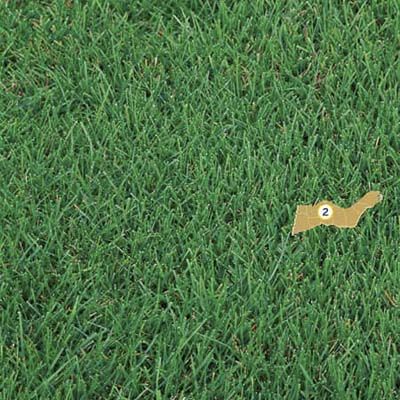
Zoysia grass is a warm-season grass that originated in Asia and has gained popularity in the United States due to its adaptability and low maintenance. It’s a versatile grass that can thrive in many climates.
Traits: Zoysia grass is highly tolerant of shade, insects, disease, and drought conditions. Its dense growth habit helps crowd out weeds, reducing the need for herbicides. However, it’s important to note that Zoysia turns brown when temperatures drop and goes dormant in the winter. The grass is valued for its soft, lush texture that’s comfortable enough to walk barefoot on.
When to plant: The best time to plant Zoysia grass is in April, when soil temperatures have warmed up and the risk of frost has passed, so the grass has time to establish itself.
Newesr varieties: ‘Meyer,’ ‘Zenith,’ and ‘Compadre’ are newer varieties that are more winter hardy than traditional varieties, so they can be planted in a wider range of climates. Scientists are currently working to improve root establishment and leaf textures.
Alternatives: If Zoysia grass isn’t the best fit for your lawn, there are a few alternatives:
- Centipede grass: Best for acidic soils and low-maintenance needs
- Bermuda grass: Excellent heat tolerance and quick recovery from damage
- Tall fescue: Good option for transition zones with both hot summers and cold winters
Zone 3: St. Augustine grass (Stenotaphrum secundatum)
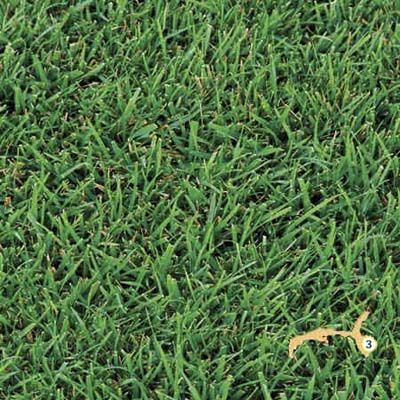
St. Augustine grass is a warm-season grass that thrives in tropical and subtropical regions. It’s particularly well-suited for coastal areas with sandy soils and is known for its ability to form a thick, carpet-like lawn.
Traits: St. Augustine grass performs best in sandy soil and full sun. Compared to some other grass types, it’s less tolerant of foot traffic and can be susceptible to chewing insects. However, it can spread rapidly, so it’s good for lawns with bare spots, and it’s perfect for salty climates in the coastal regions.
When to plant: The ideal time to plant St. Augustine grass is in April when the soil is warm and the frost risk has passed. This grass is typically sowed through sod or plugs rather than seeds, which helps it establish faster.
Newer varieties: ‘Raleigh,’ ‘Delmar,’ and ‘Mercedes’ are new breeds with better shade tolerance and winter hardiness. They are also more resistant to common pests and diseases.
Alternatives: St. Augustine grass has some suitable alternatives that can meet specific needs:
- Bahia grass: Drought-tolerant and well-suited for sandy soils
- Centipede grass: Low-maintenance option that thrives in acidic soils
- Seashore paspalum: Excellent salt tolerance for coastal areas
If your St. Augustine grass does succumb to damage, read our guide to learn how to revive it.
Zone 4: Bermuda grass (Cynodon spp.)
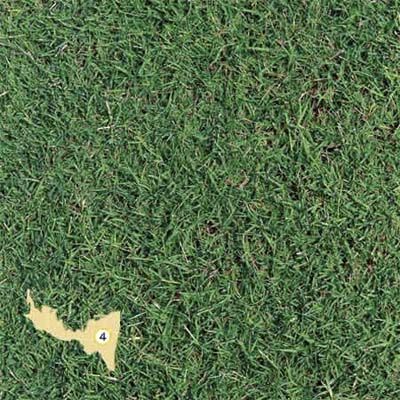
Bermuda grass is a warm-season grass that originated in Africa and has become a popular choice for lawns in southern and southwestern regions of the United States. Bermuda grass grows rapidly and can create a robust and attractive turf.
Traits: Bermuda grass thrives in full sun conditions and is an aggressive spreader. It has excellent heat and drought tolerance, which is good for hot climates, but it needs frequent fertilization to stay healthy and can become invasive if not properly managed. It also handles heavy foot traffic well, making it ideal for recreational areas. Keep it mowed to 1 or 2 inches high to keep it under control.
When to plant: Like many other varieties, Bermuda grass is best planted in April for a thick, healthy lawn by summer.
Newer varieties: ‘Riviera,’ ‘Yukon,’ and ‘Patriot,’ are improved Bermuda grass varieties that can better withstand cooler temperatures. This makes them good for transition zones where winters can be more severe. Scientists are working to make varieties with increased cold resistance and greener grass.
Alternatives: Here are some good alternatives for Bermuda grass:
- Zoysia: Warm-season grass with good shade tolerance
- Buffalo grass: Native grass with excellent drought tolerance
- Tall fescue: Good option for heavy foot traffic that has high drought tolerance
Zone 5: Buffalo Grass (Buchloe dactyloides)
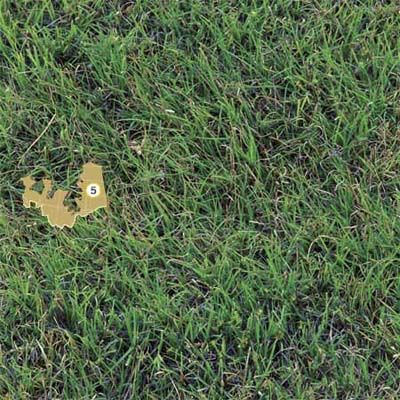
Buffalo grass is a native North American grass species that has gained popularity as a low-maintenance lawn option. It thrives in areas with low rainfall and high temperatures, making it a great choice for water-conscious homeowners.
Traits: Buffalo grass needs very little water and almost no fertilizer to grow. It creates a fine-textured, grayish-green turf that can withstand hot, dry conditions. However, excessive watering or fertilization can actually encourage weed growth in Buffalo grass lawns. Buffalo grass is also a very soft grass, similar to St. Augustine.
When to plant: Buffalo grass is best planted in April and May so it can establish itself before the peak of summer heat. Spring and early summer planting also promotes strong root development.
Newer varieties: ‘Bowie,’ ‘Density,’ and ‘Texoka’ have better turf quality. They make a denser, more attractive lawn that maintains the species’ low-maintenance characteristics. Grass breeders are working to create a greener grass that is more tolerant to different types of soil.
Alternatives: Other types of grass will work if Buffalo grass isn’t appropriate or available:
- Bermuda grass: Known for its durability and rapid growth in warmer regions
- Kentucky bluegrass: Good option for cooler climates with adequate irrigation
- Tall fescue: Versatile grass that can tolerate a range of conditions
Zone 6: Kentucky Bluegrass (Poa pratensis)
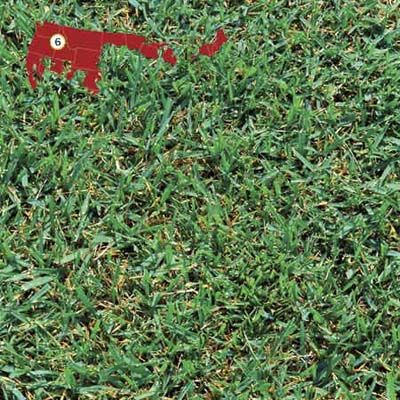
Kentucky Bluegrass is a cool-season grass widely used in northern regions of the United States. Known for its rich color and ability to form dense, attractive turf, it’s a popular choice for residential lawns, sports fields, and other high-visibility, high-traffic areas.
Traits: Kentucky Bluegrass recovers well from drought, cold temperatures, and foot traffic. It’s often used in sod production because it forms a strong, interconnected root system. However, it needs more water than other grass types, especially during hot weather.
When to plant: The ideal time to plant Kentucky Bluegrass is in September. Warm soil and cool temperatures help the grass implant resilient roots quickly.
Newesr varieties: ‘NuDestiny’ offers improved resistance to certain fungal diseases. ‘Midnight and ‘Blue Velvet’ perform better in lower light conditions than traditional Kentucky Bluegrass varieties. Innovations are focused on enhancing the grass’s drought tolerance and recovery rates.
Alternatives: If Kentucky Bluegrass isn’t the best fit for your lawn, consider these alternatives:
- Perennial ryegrass: Establishes quickly and has a fine texture
- Fine-leaf fescue: Excellent for shaded areas and low-maintenance lawns
- Tall fescue: Good option for transition zones with both hot summers and cold winters
